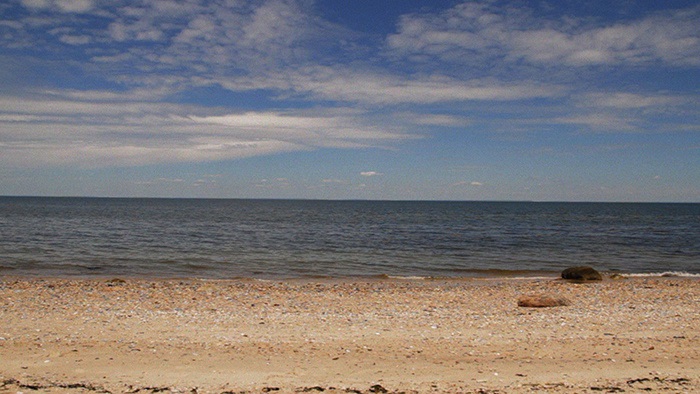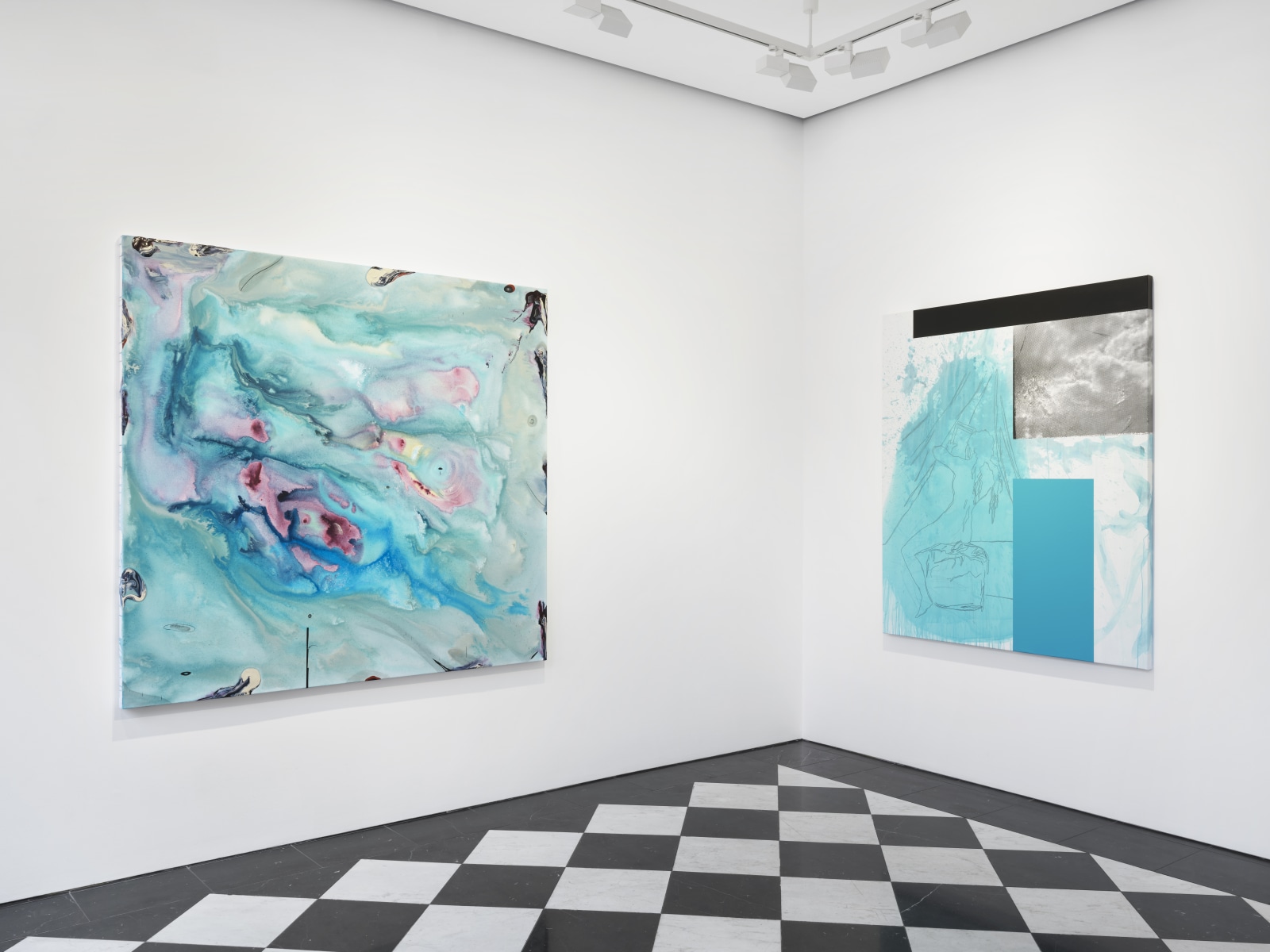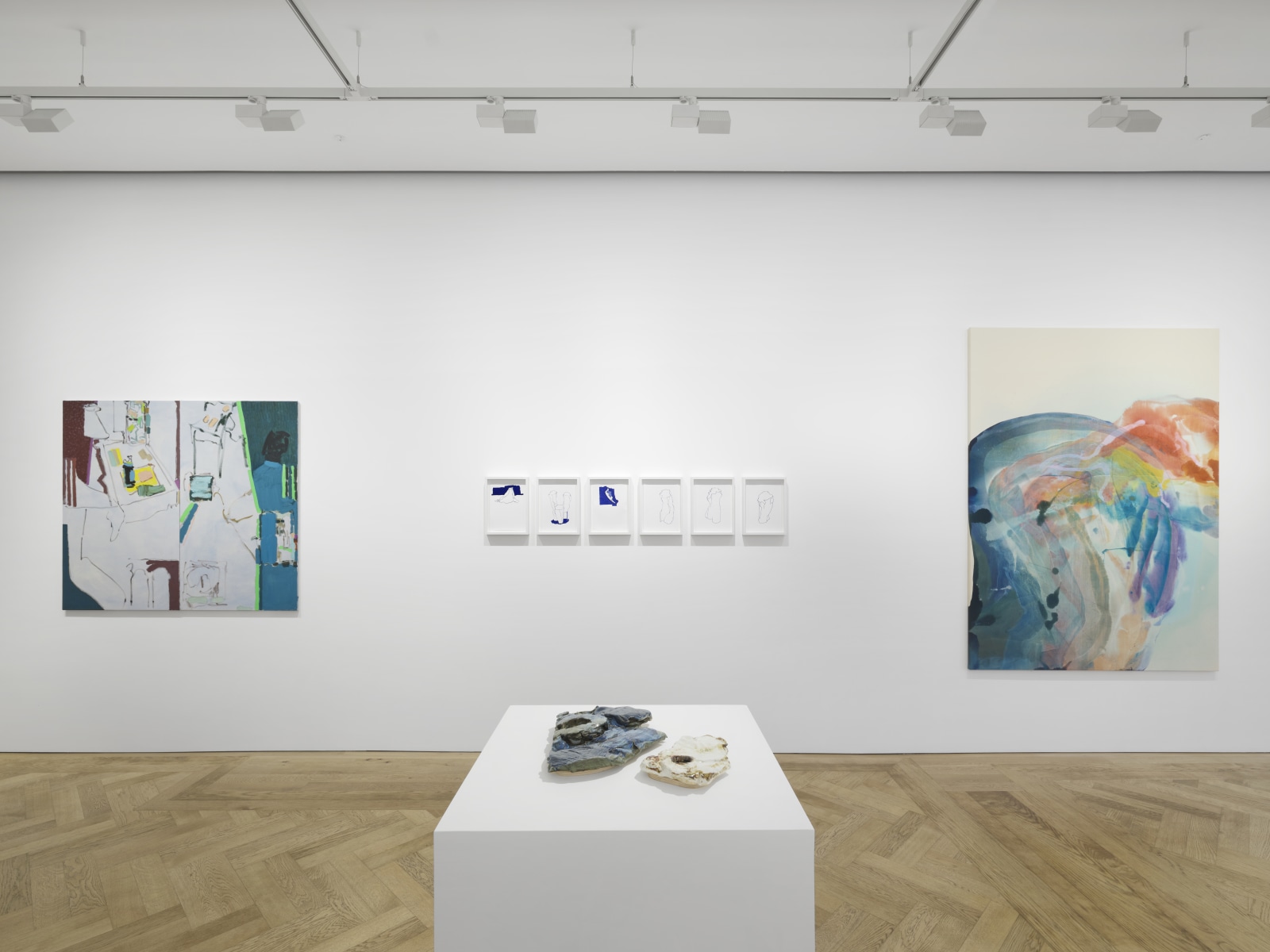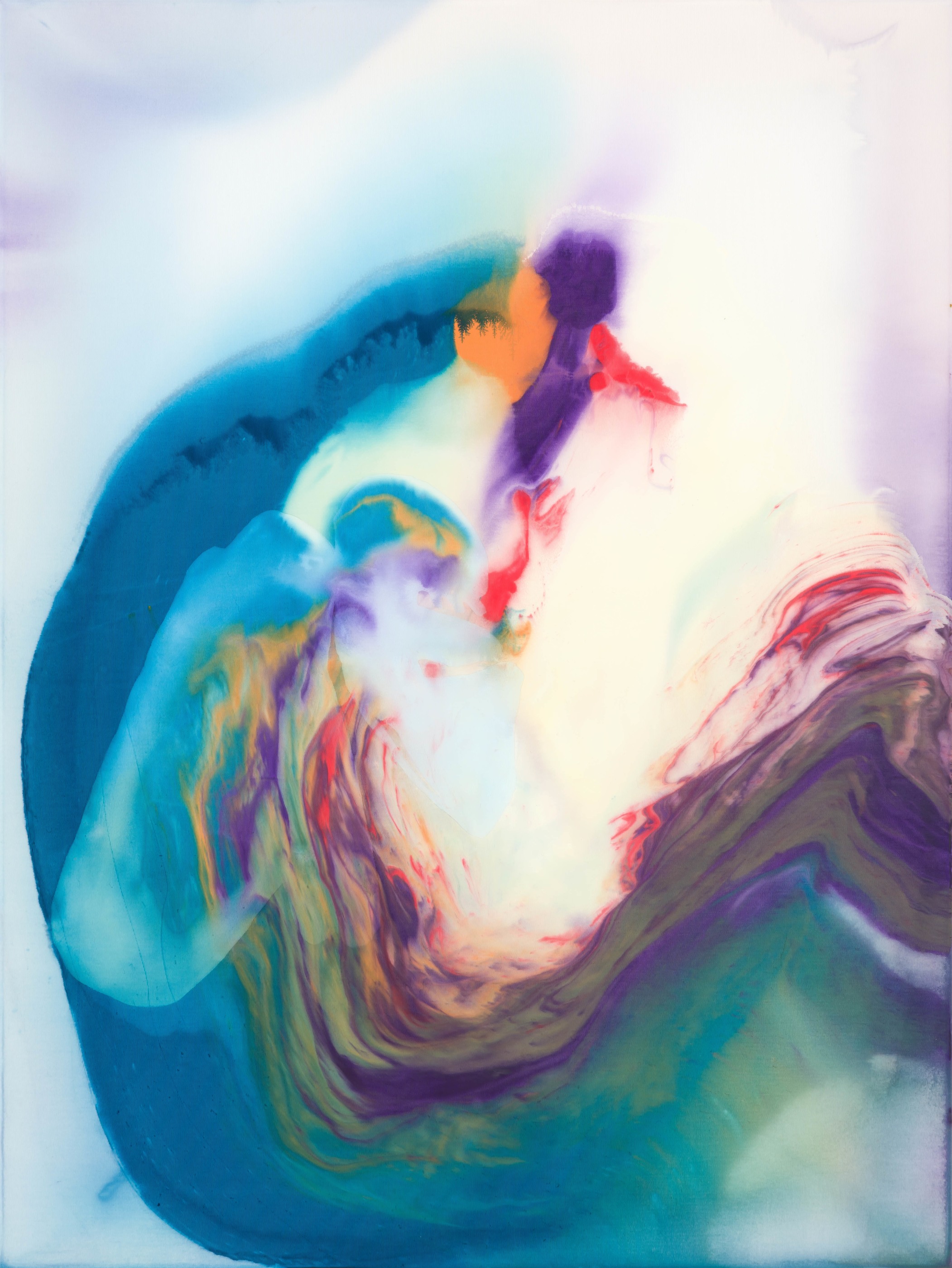
Your Mind is Now an Ocean
Pilar Corrias is pleased to present a group exhibition of works by Koo Jeong A, Ragna Bley, Keren Cytter, Sophie von Hellermann, Manuel Mathieu, Mary Ramsden, Rachel Rose, and Julião Sarmento.
Tapping into the history of the ocean as an image of the sublime and the unconscious, Your Mind is Now an Ocean brings together a range of artworks that evoke the ebb and flow of the tides, rivers, seas and beaches, offering a spectrum of seductive blues in which to lose oneself. At the heart of the exhibition is Keren Cytter’s short film Ocean (2014), a dreamlike arrangement of seemingly unconnected narratives. Cytter’s film begins with a modest family dinner that starts peacefully before descending into a furious squabble. We then meet a Hispanic couple, and a chorus of lovers on a beach rolling around beside a fire; as the film progresses the narrator seems to suggest that the ocean offers a kind of relief or alternative to everyday turmoil. The video depicts a world where characters’ consciousnesses intermingle with the environment, their moods and thoughts as unpredictable as the sea. The film concludes with a shot of the beach on a calm day, accompanied by the phrase, ‘your mind is now an ocean’.
When Mathieu began to paint The Poetry in our Disappearance (2023), the artist noticed how the paint started to float slowly away on the surface of the canvas, creating a space between what might be a figure and the infinite depth of what appeared to be a sky. As a painter for whom both apparitions and ephemerality are such integral parts of his practice, Mathieu wanted to look at the ways in which disappearance manifests itself as a phenomenon in his painting – and how this relates to our ability to identify these feelings through language and poetry. For Mathieu, poetry is not only a combination of words but also a route that we use to navigate an intimate relation with ourselves – both in our appearances and our disappearances.
While Mathieu often comes across accidental representations of himself upon completion of the works, Self Portrait 0322 (2022) is the only direct self-portrait that the artist has created. For Mathieu there is an interesting correlation between the many layers compressed in the ceramic to the complex layers of ourselves that coexist within our prescribed bodies. The material becomes a way to transcend what we see, connecting us to our inner selves.
Out of the Blue (2022) depicts a group of bathers frolicking in the ocean under a golden summer light, unaware of what is lurking under the water. Von Hellermann leaves this potential threat deliberately ambiguous – the change in colour could be a result of the alternating currents, or something more ominous, like a predatory creature. Are they panicking or splashing joyfully on a warm summer’s day?
On raw, unprimed canvas von Hellermann swirls pigment atop a water base, a technique that allows the artist to conjure a feeling of liquid instability. Playing on the romantic associations of oceans in the history of painting, von Hellermann reminds us of both the capricious threats of nature and the enduring power of a sublime seascape.
Mary Ramsden’s well up (2019) depicts what might be a seascape on the left side of the canvas, with two sailboats, one in a pinkish hue, the other blue and yellow, quietly gliding through a dark, moonlit night. Yet the right side of the canvas is open, with a patch of blue, and a few hesitant lines in orange. The two sides of the canvas form a dialogue, enacting an oscillation between raw abstraction and the faint possibility of an image.
In a method we often find in her work, Ramsden creates a set of formal relationships that both invites the viewer to see an image, while at the same time in the sparsity of her mark-making she confirms a painting that is open-ended, palpably abstract.
Through to the blue (2021) evokes the quality of a memory, with outlines and hints of furniture, books, and other daily objects framed by a rich turquoise hue. On the right side, a dark figure might lurk, with a chair suggested in scumbled outline, with patches of pink on its seat. On the left side, a lampshade over a table, with pinks, yellows and pale blues suggestive of everyday objects on a table. Reminiscent of the Intimism of Vuillard and Bonnard, Ramsden brings the viewer into her world, creating a lush interior in which the viewer’s eye can settle, or wander, as it wishes.
Part of a larger series titled Dr Vogt, first shown at Dia Art Foundation, New York, in 2010, Koo Jeong A's sparse line drawings record the artist's own experiences, both literal and imagined, of swimming and walking within a landscape.
The drawings do not depict urban or architectural environments, but rather fragmentary natural surroundings, such as minimally rendered cliffs and rocky outcroppings. Based on Koo’s experiences of swimming, the drawings suggest the sublimity of being alone in nature, suspended above or in water. A narrative thread works its way through the episodic journey, which reveals intimate reflections on isolation, our natural environment and everyday events.
In Ragna Bley’s Drift (2023), translucent layers of blue swell upwards like a wave, colliding with splashes of reds and oranges at the top right of the painting. The blues engulf the warmer hues, while the colours combine to create hints of yellows and purples. The painting achieves a stunning luminosity, like a patch of iridescent oil on the surface of water.
If Bley’s work usually hints at familiar shapes and organic forms, the visual associations that arise from her process are unique to each painting, emerging from a blend of accident and experimentation. As with many of Bley’s paintings, part of the surface of the work is left bare, alluding to the changeability of images – and more broadly, to the slippages between our frameworks of understanding, the shifts in our perception.
Based on Francisco Goya’s Naked woman with a mirror (c.1794–97), Julião Sarmento’s Mujer desnuda con Espejo (Miami Blue) (2020) depicts a naked girl holding a mirror, sat with her back turned to the viewer. Sarmento splashes the girl in pale blue pigment, which he juxtaposes with a sharp rectangle of turquoise, a strip of black and a patch of sky rendered in a monochrome silkscreen.
Originally shot when Rose was seven years old, and printed 30 years later, North Salem Moon (2022) depicts a full moon rising over a nearby hill, exposing the delicacy of a single, perfectly intact dandelion. Capturing the beautiful evanescence of the moment, a midsummer night’s reverie preserved from the innocence of childhood, the photograph is also a reminder that the tides are controlled by the moon – a source of both lunacy and delight.






















